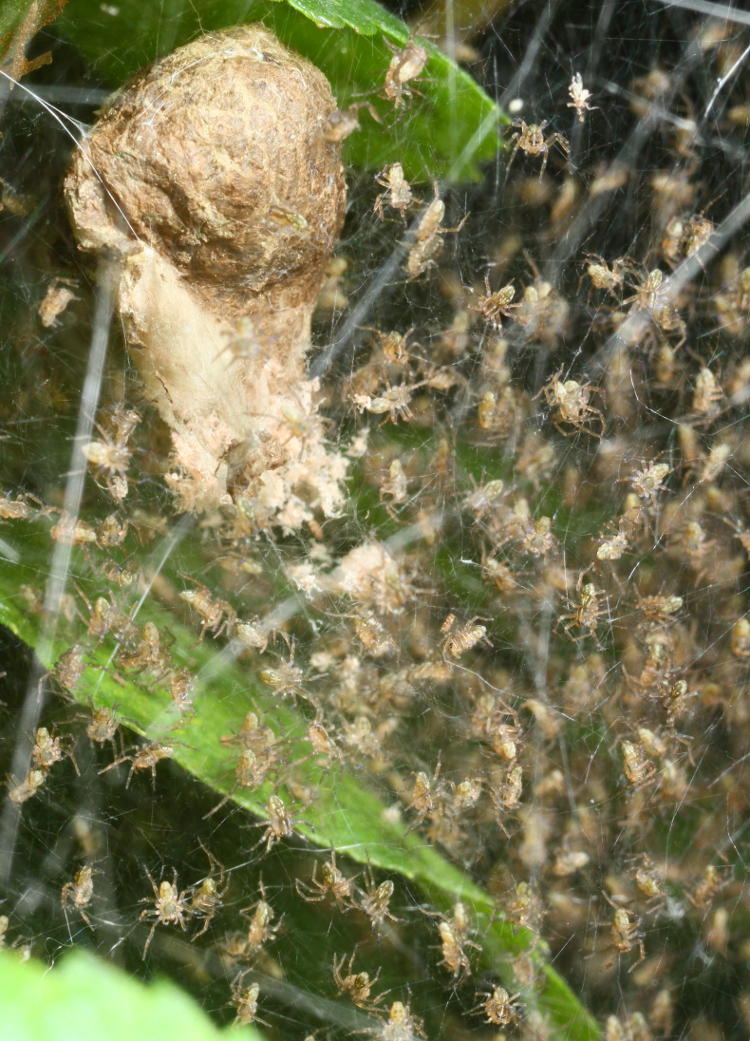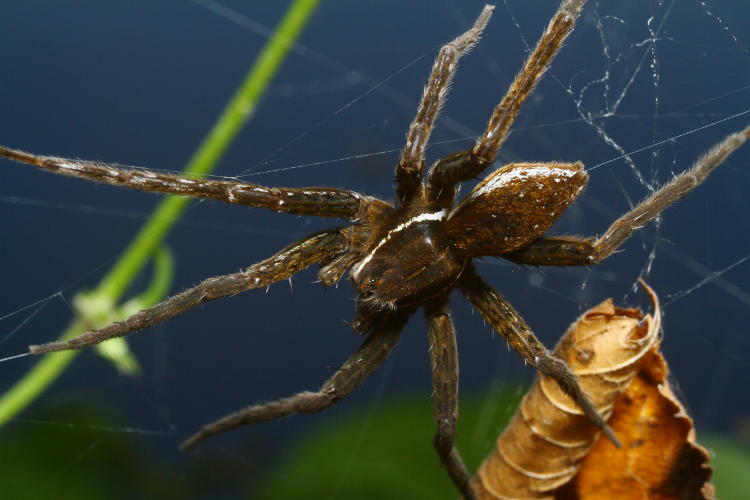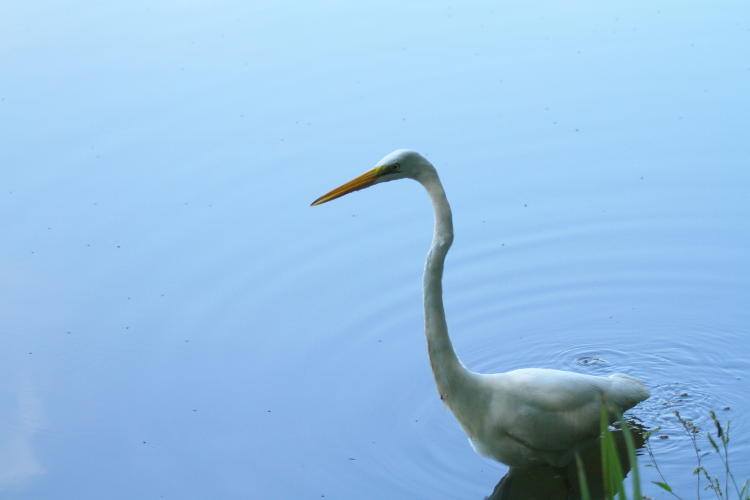
Just a handful of photos, other stuff that I collected on the same days that I was shooting the great egret and the turtles. More or less, anyway – I actually returned to capture the above shot of newborn six-spotted fishing spiders (Dolomedes triton) because I didn’t have the macro flash rig along when I first spotted them. Unfortunately, the nice composition of the mother running interference atop the web tent wasn’t there when I returned; instead she was hidden in the leaves underneath, and not very cooperative in coming out into view. But as it turns out, this was one of several hatchings all taking place in the same time frame, so I could pick one of the other mothers to feature. Like so.

Six-spotted fishing spiders are fairly big as reproducing adults, this one being roughly 50-60mm in leg spread. And while I always interpreted them as remaining near the hatchlings for protection (as the green lynx spiders seem to,) all of the ones that I found were more inclined to seek cover than to dispute my presence, so who knows? Another, without an apparent egg sac, also sought a hiding spot as I leaned in, but it wasn’t the most effective attempt.

Interspersed freely among all of these, which were all found on low plants directly bordering the water, were the ubiquitous long-jawed orb weavers (genus Tetragnatha,) some of whom appeared to be engaged in courting behavior. I would have initially considered this late in the season, but spiders take all spring and summer to mature, and the young are often born in the fall and overwinter as tiny little things before starting their serious growth in the spring. Also, since I saw the same behavior taking place at Jordan Lake a few days before this, I think it’s safe to say it’s a trait.

Long-jawed orb weavers are gangly things, with not just spindly legs but long pedipalps and chelicerae, and this image makes it seem almost chaotic. The pedipalps are the things with bulbous ends at lower left, the shape defining this one as a male – this is what they use to impregnate the female. While behind them, the thicker and spiky protrusions are the base of the chelicerae, more show than function, as I understand it. Tetragnathas are not particularly aggressive or formidable spiders, despite having a decent size to them (body length in the 20-30mm range) – I’ve accidentally passed through their webs any number of times, and had them running across my arms, camera, and hat every so often, usually complacent enough to let me scoop them up and return them to their host plants.
I found a couple different species of very large caterpillar while out there, both of which I had to look up since I’d never seen them before.

No, this is only one of them – they can change color drastically at different instars of the larval stage. These are the caterpillars of a banded sphinx moth (Eumorpha fasciatus,) and quite good-sized; the larger one measures roughly 100mm in body length. The adults are large and vivid, and I’ve seen them around occasionally.
About 20 meters away, a more threatening species was found.

This is the larva of a smeared dagger moth, which isn’t very pretty as an adult, but those spikes and the aposematic coloration were more than enough to convince me to keep my hands back, and that impression was accurate: they do have an irritant that’s administered with those daggers. Slightly smaller than the largest banded sphinx caterpillar, but still an appreciable size.
And finally, the great egret was still hanging out.

I saw it coming along the bank and took up position ahead of it, and true to its nature, it came almost directly alongside me. This time I didn’t have the longer lens but didn’t really need it – the Canon 100-300 L was more than enough, and in this case, I’d zoomed back out to 100mm to get the broader view. You can see the water reaching the egret’s belly, and I believe that it decided, immediately after this, that it couldn’t detour a safe enough distance from me and still remain in water shallow enough to wade, so it flew off to a nearby bank. It was hardly too spooked, because I eventually caught up with it there for more close portraits. But I’ll close with a slightly earlier one, as it hove into view through the screening plants on the banks – I just liked it better for the atmosphere and the abstract rippling water background.

Fear not! There are at least two more posts coming up, regarding a recent trip to Mason Farm Biological Reserve, and perhaps whatever else I photograph as I build up to them – catching up has been ongoing, but it’s much better than having nothing to photograph, and that season is approaching. Then you get to slog through my philosophical posts.




















































